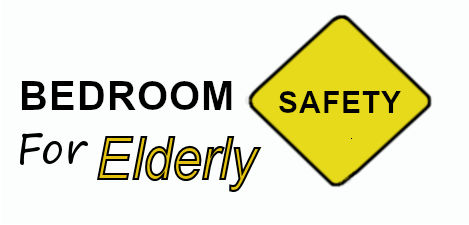 Bedroom Safety for Elderly
Bedroom Safety for Elderly
Bedroom Safety for Elderly
If you have older parents or neighbors, consider doing a check of the bedroom safety for elderly. It only takes a small amount of time to identify risks and make corrections. Prevention is especially important to the elderly population. As we age, it becomes more difficult to recover from accidents. So by taking precautions that help minimize trips and falls, you may impact a person’s future dramatically. It could make the difference between years of suffering and a better quality of life. We have provided some suggestions on ways to improve bedroom safety for elderly and hope that it helps!
Bed Safety for Elderly
Most of the time spent in a bedroom is spent in bed. So it makes sense that this be the first stop on your path to bedroom safety for elderly. Be sure the bed is set to an and safe height for the user. The bed should not be too high or too low as both are problematic. Typically the person who sleeps in it should be able to sit on it with their feet flush to the floor and knees at a 90 degree angle. This can be accomplished by removing or adjusting bed legs or experimenting with different mattress and box springs thickness. Another option is using a hospital bed.
Other Bed Safety Tips
Bed height is not the only bedroom safety for elderly people that must be checked. For those seniors who utilize adaptive height hospital beds, wheels can help with mobility issues. Just be sure the wheels are locked when using it in place. Bed rails and guards can also be in place to reduce the chances of rolling off the bed. Also, make sure bedding is not too large. Long sheets and comforters can easily become a trip hazard. Lastly in terms of the bed set up, provide a secure bedside item that can be held upon rising for stability.
Address Possible Balance and Walking Issues
There are a few other ways you can create better bedroom safety for elderly parents. Aging affects us in many ways; some of those are in balance and strength. Just getting out of bed could present a possible fall risk. Slowly rising may help alleviate sudden dizziness from changing positions. An adjustable bed is a useful tool. However, if the person can remember to change positions slowly, that may be all that is needed. Provide non-slip socks or slippers to further enhance bedroom safety for elderly as they get up in the night.
Eliminate Walkway Dangers in the Bedroom
Eliminate walkway dangers to provide bedroom safety for elderly people. Medical conditions or simply the act of getting older may result in needing the use of a walker or cane. This makes trekking to the restroom or getting up in the middle of the night more challenging. Be sure to clear a path to the bedroom entryway and the restroom. Keep it free from clutter or any furniture that may cause a blockage in the dark. Carpet, rugs and other floor décor can cause tripping so if possible remove these from the path.
Consider Special Bathroom Needs
Some seniors may have special restroom concerns that impact bedroom safety for elderly. One solution is the use of a bedside toilet complete with toilet paper/wipes and hand sanitizer. This works well for older people who suffer from incontinence or increased bathroom frequency. Just be sure everything needed is easily within reach. Many use incontinence garments as well. Anything that can keep an elderly patient from making multiple trips at night will reduce falls. Avoiding injury is the primary goal of all these recommendations.
Make Lighting Easily Accessible
Many reasons might have an older person getting up more often during the night. Providing easy access to a light source can help make the bedroom safer. One way to do this is by providing one or multiple nightlights. Another good option is employing voice or touch activated lighting. This lighting provides more visibility than nightlights. It is also often faster and easier than using a light switch.
Examine Retrofitting Options
Adding accessories can increase the ease in which seniors can perform everyday tasks. Grab bars make standing up and getting around less physically demanding for seniors. Bright lighting triggered by smart technology may help prevent tripping accidents. The bedroom is just one place to start. There are many ways seniors benefit from remodeling throughout the home. From adjustable kitchen shelving to bath seats in the restroom, retrofitting can help seniors adapt to their changing needs.
Emergency Service
Each situation is different so there may be other things that influence your bedroom safety for elderly needs. Having a plan in place for emergencies is vital. This plan must take into account medical concerns, mobility issues, memory and physical condition. Be sure there is documentation available of any medications the elderly may be taking. Leave emergency contact numbers prominently displayed. You may even consider using a service that caters to seniors who may need a fast way to get help. These services use a worn button that alerts staff who can talk to the senior to see what action must be taken.
Bedroom Safety for Elderly Checklist
- Adjust bed height.
- Install bed rails or guard.
- Check that bedding is not too long.
- Provide non-slip slippers or socks.
- Clear walkways of furniture and clutter.
- Remove rugs and other tripping hazards.
- Set up bedside toilet if needed.
- Ensure all necessary items are within each.
- Install nightlight or use voice activated lighting system.
- Provide emergency contact information and means to access.
We are all responsible to some degree for the bedroom safety of elderly. You can perform a home safety check no matter if you work in a nursery home or provide home care. Being proactive can make a big difference for senior living.
 Bedroom Safety for Elderly
Bedroom Safety for Elderly